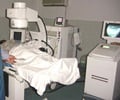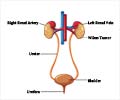- The underlying cause of Wilms’ tumor, a common childhood kidney cancer, has been discovered
- It occurs due to an epigenetic DNA mutation in a single renal cell
- Cancer can spread throughout the kidney or even to both kidneys
- The new discovery could lead to the development of novel screening tests for early detection of Wilms’ tumor
The study, published in Science, has uncovered a hitherto unidentified mechanism of cancer pathogenesis in the kidney that takes place within the first few weeks after birth. In this process, an early renal cell acquires a carcinogenic DNA mutation that leads to its proliferation during the development of the kidney.
For this reason, Wilms’ tumor has often been referred to as a tumor that results from one cell ‘going wrong’ during early kidney development.
- Elucidation of this root cause will help to develop specific treatments as well as prevent the recurrence of Wilms’ tumor
- This discovery could also pave the way for developing screening tests for detecting cancer before it manifests
Read More..
Wilms’ Tumor: Key Facts
Wilms’ tumor is named after Dr. Max Wilms, the German surgeon who first described the cancer. It is also known as nephroblastoma, a kidney cancer that mainly affects children under 5 years of age.- Wilms’ tumor is the most common type of kidney cancer in children
- Around 80 cases of Wilms’ tumor are diagnosed every year in the UK
- 9 out of 10 cases can be cured by surgical resection of the affected kidney along with chemotherapy and radiotherapy
- Wilms’ tumor generally affects one kidney
- In about 10 percent of cases, both kidneys are affected
Salient Features of the Study
This is the first study that compares healthy normal kidney tissue with Wilms’ tumor tissue. The study was conducted by the Wellcome Sanger Institute in Hinxton, Addenbrooke’s Hospital in Cambridge, and the UCL Great Ormond Street Institute of Child Health in London.- Comparative genomic analysis was used to elucidate the root cause of Wilms’ tumor
- 66 tumor and 163 normal kidney tissue samples were used in the study
- DNA from the tissue samples was sequenced, which generated 229 whole-genome sequences
- Analysis of the genomic sequences identified genetic differences between normal and tumor tissues arising from DNA mutations
- The DNA mutations were shared both by normal and tumor tissues in two-thirds of children with Wilms’ tumor
- The DNA mutations were epigenetic in nature as they arose due to non-genetic influences on gene expression
- The epigenetic DNA mutations initially occurred in a single renal cell that suppressed the H19 gene, which prevents abnormal cell proliferation
- Suppression of the H19 gene led to abnormal proliferation of cells, resulting in pre-cancerous patches of kidney tissue that developed into Wilms’ tumor
Drawbacks of Surgery and Prospects of the New Discovery for Treating Wilms’ Tumor
Wilms’ tumor is generally treated by surgical removal of the whole affected kidney in order to reduce the chances of recurrence. Patients with one kidney are usually able to lead a normal life. However, in the case of 10 percent of patients, both kidneys need to be removed, which can have life-threatening consequences.Dr. Kathy Pritchard-Jones, Professor of Pediatric Oncology at the UCL Great Ormond Street Institute of Child Health, said: “Surgery for Wilms’ tumor usually involves removing the whole kidney to ensure no tumor is left behind. However, some children need more precise surgery that preserves their kidney function, especially when they have tumors in both kidneys or are at increased genetic risk of further tumors. This study helps us understand how Wilms’ tumors start off and provide a marker for kidney tissue that is at high risk of forming new tumors. My hope is that in future, we’ll be able to develop treatments that focus on these patches of abnormal tissue without having to sacrifice one or both kidneys.”
Concluding Remarks
Dr. Sam Behjati, lead author of the paper and Group Leader and Wellcome Trust Intermediate Clinical Fellow from the Wellcome Sanger Institute, said: “The discovery of the genetic root of Wilms’ tumor signals a shift in our understanding of this particular cancer and childhood cancer more generally. Our findings represent a radical departure from how we think about Wilms’ tumor because we never expected to find the root of cancer in normal-looking tissue. It may even pave the way for us to begin to think about preventing childhood cancer.”Phil Brace, Chief Executive of the Little Princess Trust, said: “The Little Princess Trust is very pleased to have supported this important work. We are very excited to hear the potential impact of what has been discovered and the improved understanding as a result of this project. As a funder of pediatric cancer research, this was one of our earliest supported projects and we are very keen to support more work in this area.”
Funding Source
The study was funded by the Little Princess Trust, St. Baldrick’s Foundation, Wellcome Trust, Cancer Research UK, National Institute for Health Research, Royal College of Surgeons of England, and Great Ormond Street Hospital Children’s Charity, UK.Reference:
- Embryonal Precursors of Wilms’ Tumor - (https://science.sciencemag.org/content/366/6470/1247)
Source-Medindia
















